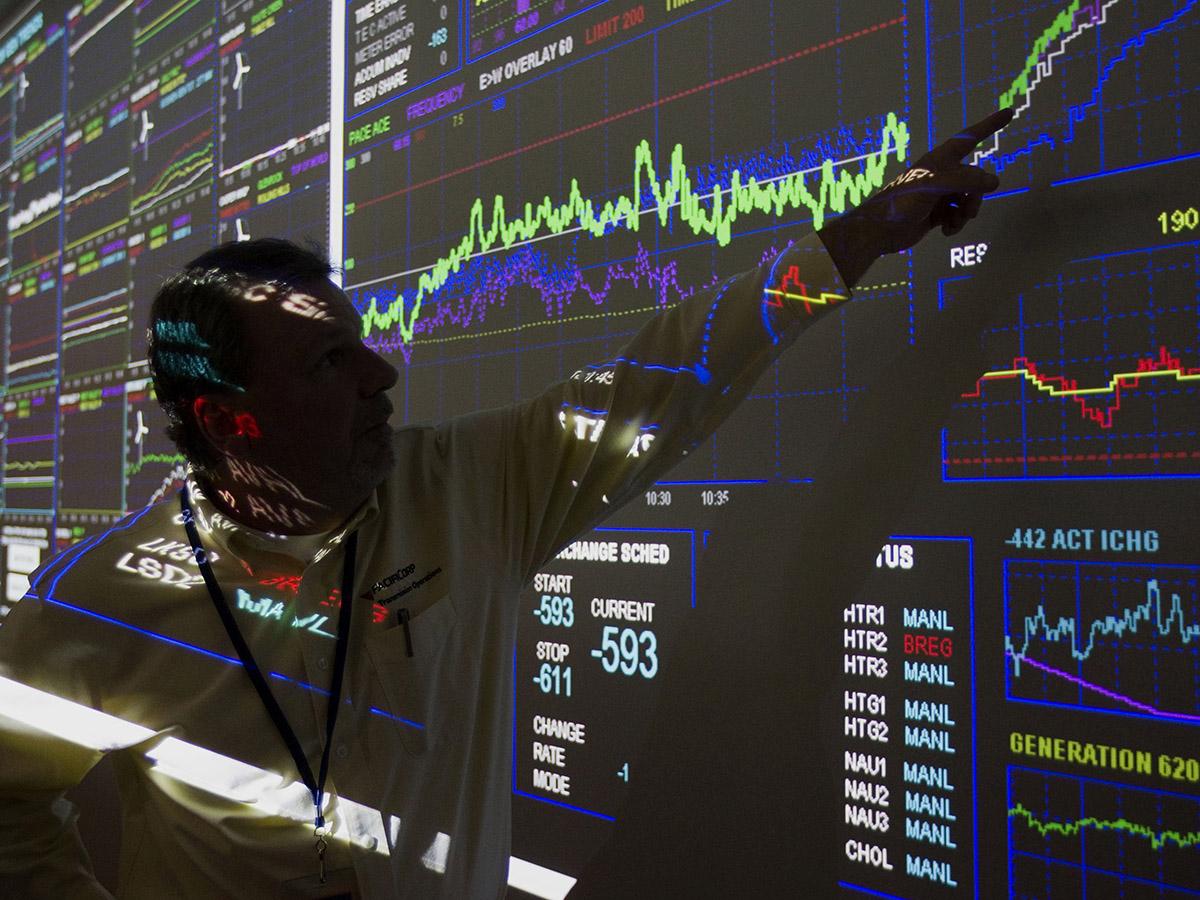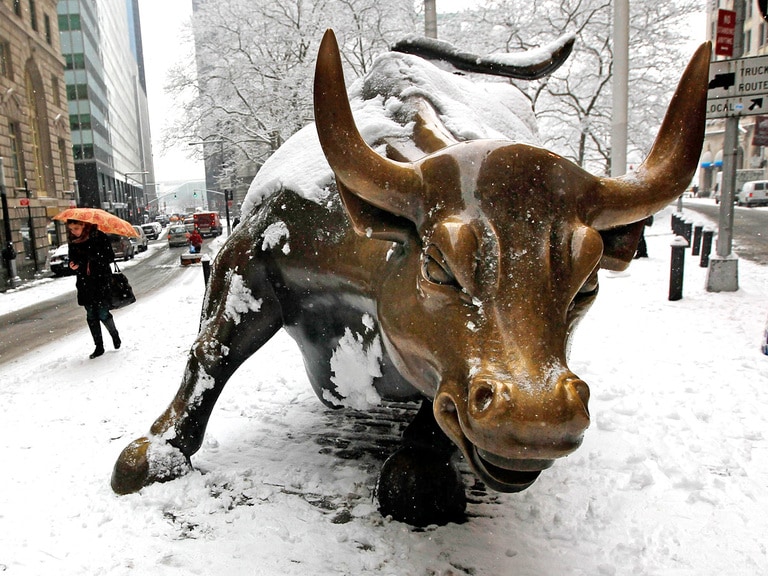Automated trades of shares in odd-lot sizes, which involve buying or selling small-sized amounts of fewer than 100 shares, have hit record levels amid the rise in algorithmic trading. What does this mean for traders?
>>> In London? Join us for a special event, Normal doesn’t make money <<<
Almost half of all trades in the US stock market currently are in so-called odd-lot sizes with fewer than 100 shares changing hands, as opposed to round lot shares in which trades are made in multiples of 100.
The level of odd-lot trades in October was the highest ever recorded at 48.9%. This was double that seen three years ago, according to the Wall Street Journal, which used data from the New York Stock Exchange. By comparison, in 2014, the small trades accounted for around only 20% of the shares bought and sold.
48.9%
Highest ever recorded level of odd-lot trades from October
Two key factors appear to be driving the trend: the rise in the number of individual company share prices above $1,000; and the increase in automated, high-frequency trading, firms incorporating odd-lot trades into their investment strategies.
Oddly appealing
Looking at the first explanation, one could look at Amazon [AMZN] shares as an example. Buying a single round-lot trade of 100 shares in the e-commerce giant would cost a whopping $170,000. Such a steep price would clearly deter most retail traders from buying Amazon shares at that level.
Retail investors wanting to have some Amazon shares in their portfolios could do so by making odd-lot purchases. However, complicating the move is the fact that retail traders are now competing against large numbers of institutional investors using high-frequency, automated or algorithmic-trading strategies involving odd lots.
The growth in computerised-trading strategies has led to a rise in buying and selling that do not adhere to multiples of 100 shares. Automated trading strategies use programmed algorithms to buy and sell stocks at high speed in response to inputs such as timing, price, amount and technical indicators, such as moving-average patterns. A JPMorgan [JPM] report from 2017 estimated that 90% of daily stock trades are carried out by computers and 10% by stock pickers.
Banks are particularly keen on odd-lot trading, which effectively divides their clients’ trades into small orders for buying or selling shares. The banks’ trading algorithms then execute the tiny orders over hours, days or weeks. Slicing the trades into odd-lot amounts could work in favour of large investors that are keen not to alert others to a big opportunity they have seen, the Wall Street Journal notes.
A confusing picture
The high-frequency nature of algorithmic trading makes it easier to buy and sell stocks. It also increases bid-ask spreads, which can lead to big potential profits – and losses -- for retail traders and investors. However, some analysts fear that regulations have yet to catch up with the growth in odd-lot trades.
In addition, odd-lot pricing quotes don’t always match the share prices posted on exchanges, as the latter are based on quotes for lots of 100 shares or more. That means investors trading in odd-lot sizes do not always have the most accurate information about the price and liquidity of odd-lot-traded stocks.
Brokers must execute an order at the best bid or offer price when buying or selling. But if odd-lot trades can’t be seen, then investors “do not have a complete picture of the current liquidity and do not know if they are getting the best price or not,” Theresa Carey wrote in Investopedia.
This means the retail market could find themselves missing out on the most lucrative price. For traders, it means they don’t often have all the data they need to properly execute their trades.
“Odd lots are a huge part of the markets,” said Tyler Gellasch, executive director of Healthy Markets told the Wall Street Journal. “Excluding odd-lot orders from the [published securities information] and best execution statistics misleads customers into thinking they are getting the best prices available, when they really aren’t.”
“Excluding odd-lot orders from the [published securities information] and best execution statistics misleads customers into thinking they are getting the best prices available, when they really aren’t” - Healthy Markets executive director Tyler Gellasch
According to Carey, there are two possible solutions: “either pressure publicly traded companies to split their stocks to bring their prices down out of the stratosphere, or for regulations to catch up to current practices.”
Regulatory responsibility
The regulatory concerns put the focus squarely on the US Securities and Exchange Commission (SEC).
“Get somebody from the SEC to explain why it hasn’t reacted to the rise of algorithmic trading,” said Omega Advisors’ Leon Cooperman. “They have created a tremendous amount of volatility in the market, scared the market and effectively raised the cost of capital to business. It exacerbates volatility during market swings and has created a Wild West environment in the stock market.”
“They have created a tremendous amount of volatility in the market, scared the market and effectively raised the cost of capital to business. It exacerbates volatility during market swings and has created a Wild West environment in the stock market” - Omega Advisors’ Leon Cooperman
This volatility can be seen when indices make significant declines in the absence of any solid economic developments to justify the drop. Of course, such swings also create opportunities for traders looking to capitalise on indices’ big falls or climbs. But the huge amount of automated algorithm-powered trades made in a short space of time can often make it difficult for active traders to quickly respond to fast-moving market developments.
The issues surrounding the growth of odd-lot trading based on computerised strategies show that traders and investors alike need to adjust their approaches to take advantage of the challenges and opportunities of buying or selling stocks when share prices reach quadruple digits.
Disclaimer Past performance is not a reliable indicator of future results.
CMC Markets is an execution-only service provider. The material (whether or not it states any opinions) is for general information purposes only, and does not take into account your personal circumstances or objectives. Nothing in this material is (or should be considered to be) financial, investment or other advice on which reliance should be placed. No opinion given in the material constitutes a recommendation by CMC Markets or the author that any particular investment, security, transaction or investment strategy is suitable for any specific person.
The material has not been prepared in accordance with legal requirements designed to promote the independence of investment research. Although we are not specifically prevented from dealing before providing this material, we do not seek to take advantage of the material prior to its dissemination.
CMC Markets does not endorse or offer opinion on the trading strategies used by the author. Their trading strategies do not guarantee any return and CMC Markets shall not be held responsible for any loss that you may incur, either directly or indirectly, arising from any investment based on any information contained herein.
*Tax treatment depends on individual circumstances and can change or may differ in a jurisdiction other than the UK.
Continue reading for FREE
- Includes free newsletter updates, unsubscribe anytime. Privacy policy





